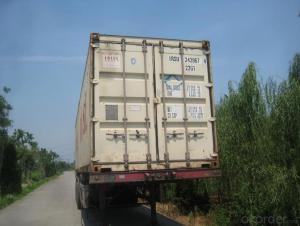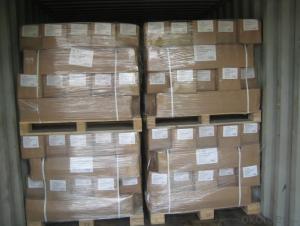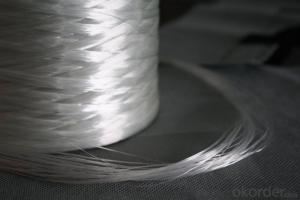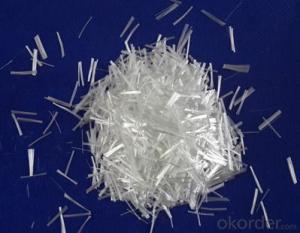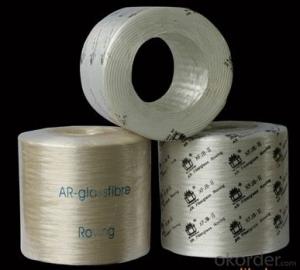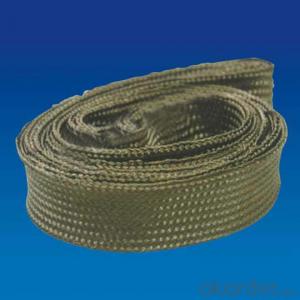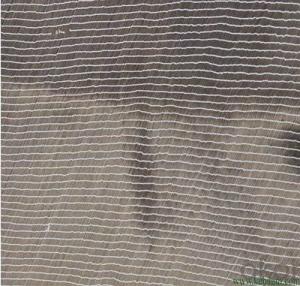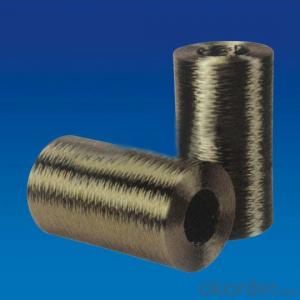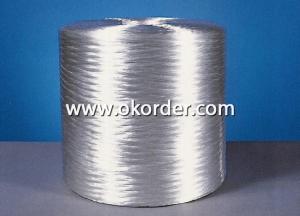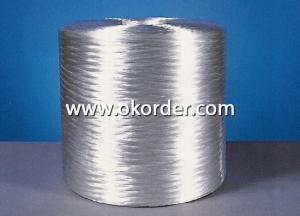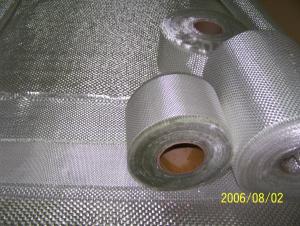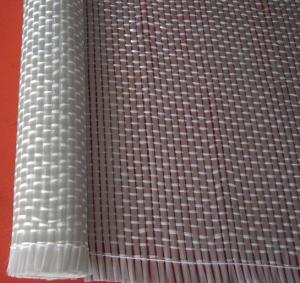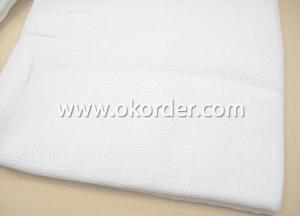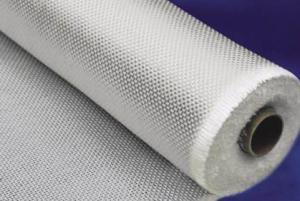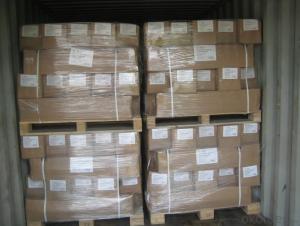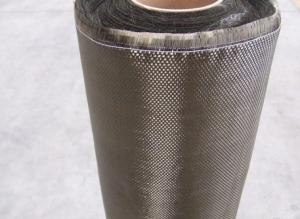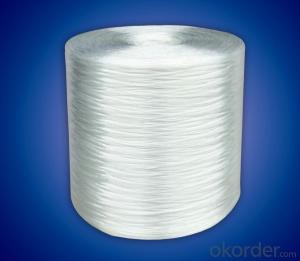E Glass Woven Roving Fabric 600gsm
- Loading Port:
- China Main Port
- Payment Terms:
- TT or LC
- Min Order Qty:
- 16000 kg
- Supply Capability:
- 160000kg Per Month kg/month
OKorder Service Pledge
OKorder Financial Service
You Might Also Like
Product Description
1. E glass roving 600gsm are bidirectional fabric made by direct rovings in plain weave pattern.
2. Applicable for hand lay-up, winding and compress molding process,Suitable for manufacturing tank,boat,automobile parts and other FRP products.
1. Consistent thickness and excellent surface treatment.
2. Rapid impregnating and good compatibility with resin.
3.Uniform tension,high dimensional stability and making handing easy.
4.Good mechanical properties and high strength of parts.
Technical Data Sheet
TEST ITEM | STANDARD | STANDARD VALUE | AVERAGE VALUE | RESULT | ||
AREA WEIGHT (G/M2) | ISO3374 | 600+/-5% | 602 | yes | ||
WIDTH (MM) | ISO5025 | 1000±20MM | 1000 | YES | ||
FABRICS COUNT (ENDS/10CM) | WARP | ISO4602 | 25±2 | 25 | yes | |
WEFT | ISO4602 | 25±2 | 24 | YES | ||
TENSILE STRENGTH(N/50CM) | WARP | ISO4606 | ≥4000 | 4015 | yes | |
WEFT | ISO4606 | ≥4000 | 4015 | YES | ||
moisture CONTENT (%) | ISO3344 | <=0.15 | 0.1 | yes | ||
WARP ROVING(TEX) | 1200 | 1200 | YES | |||
WEFT ROVING(tex) | 1200 | 1200 | YES | |||
LOSS ON IGNITION (%) | ISO1887 | 0.4-0.8 | 0.5 | yes | ||
FAQ
Package and Storage:Eech roll is packed by polyester bag,and then put into a cardboard box or plastic wowen bag.The weight of each roll is between 20 to 85 Kg, The rolls are to be horizontally placed and could be in bulk or on pallet.Optimum storage conditions are between the temperature of 5~35℃ and with the humidity between 35%~65%.The product should be used within 12 months from the time of delivery and remain in theiroriginal packaging until just prior to use.

- Q:An introduction to glass fiber cloth
- For the occasion requiring high warp or weft strength, the strength of woven roving mainly focus on the warp or weft direction of fabric. Roving roving is composed of parallel raw silk or parallel filaments. According to glass composition, twistless roving can be divided into unidirectional cloth E-GLASS alkali-free glass twistless roving and C-GLASS medium alkali glass twistless roving. Glass fiber woven roving is twistless roving plain fabric and is an important base material for pasting glass?reinforced?plastics. Moreover, it is also unidirectional weft cloth.
- Q:Fiber has the difference between twist and twist
- Twist is the number of twists in the unit length of the yarn along the axis, generally expressed as a twist of /m
- Q:What is the material of glass steel? How to make it?
- Glass fiber reinforced plastic is a kind of composite material. It is common in everyday life. As a typical composite material, it is made by glass fiber and epoxy resin. In general, the glass fiber should be woven into a glass cloth, and then mix with the epoxy resin, the glass fiber reinforced plastic can be made after expoxy resin solidition. Epoxy resin itself is toxic, but the chemical properties is stable, and it is not harmful to human after solidation.
- Q:Model parameters of glass fiber reinforced plastic and glass fiber cloth
- The materials for strengthen are Medium, vinyl type and flame retardant, vinyl resin. There are many types of materials like phthalate, benzene, alkali free glass fiber roving, knitted mat etc.: polyester resin
- Q:What is the function of adding fiber material to concrete ?
- In projects, some fiber materials such as paper, hemp fiber and straw are added to concrete. If plastering mortar is added into mixer, it can play the role of skeleton, improve the crack resistance and tensile strength of the plaster layer and enhance the flexibility of floated coat and durability in order to reduce floated coat contraction and make it not easy to fall. The characteristics of the fiber material will be introduced as follows: firstly, paper reinforcement includes dry and wet paper. Dry paper is use at the time of adding quick lime, It was tore up, was removed dust and soaked with water, and then 100 kg lime and 2.75 kg paper are mixed. When using, it should be made into powder by a small steel mill and 3 mm aperture sieve filter. When wet paper reinforcement (commonly known as pulp) was used, each 100 kg lime should be added into 2.9 kg wet paper reinforcement. Specific operation method is the same as that of dry paper. Secondly, the use of hemp fiber requires tenacity and purities. To make is loose, it need to be dried, linen and then it is cut into 20 mm to 30 mm. Each 100kg lime adds 1kg loose hemp which is hemp fiber grey. Thirdly, grass stalks are usually cut into rice straw or wheat straw which is no more than 30 mm long. It could be used after half a month after soaked in lime water. It also can be used as paper after soaked in lime or caustic soda. Fourthly, synthetic fiber mainly includes polypropylene fiber and nylon fiber used for mortar. When using, you should pay attention to its disparity and alkali resistance. These are the all material fiber used in concrete. You should be familiar with the characteristics of the material in order to make better use of it.
- Q:how to produce glass?reinforced?plastics grating
- Production technology, there are mainly three konds of glass?reinforced?plastics grating production process: Peciprocating filament winding process, continuous filament winding process and casting process. Reciprocating filament winding process(belongs to fixed-length method): In this process, the leaching glue tank with rotating mandrel reciprocate and the long glass silk with a certain angle works as auxiliary. Auxiliary angel (the winding angle) is controlled by the moving speed of leaching glue tank and the speed ratio of mandrel and translational motion of leaching glue tank is controlled by computerized electric machine. The layer number of twisting is gradually increased to meet the thickeness of design wall. After winding is completed, resin in products should be solidified and then form mandrel from glass reinforced tube. Continuous filament winding process (belongs to continuous method) The process is that pipe pass through a feeding station which is to supply resin presoak roving, chopped glass reinforced fiber, resin sand mixture. then pipe formed in the continuous progress of mandrel. Casting process (belongs to fixed-length method) In this process, chopped glass fiber reinforced materials and sand are put into the steel mould fixed in bearing, then unsaturated resin used as catalyst is added into one side of steel mould to dip reinforced materia. Under the effect of centrifugal force, the resin exchange fiber and filler in the air so as to create a nonporous compact composite material and a smooth, bright and clean pipe surface layer with rich resin. steel tubes start to curing under high temperature. Pipe produced in this way is also called glass reinforced plastic sand pipe. In the world, the number of manufacturers using reciprocating filament winding process to produce tube is more than that of the rest two production technology. One of the reasons is is that the former has a wider range of usage and its applicability is better.
- Q:Epoxy resin mortar mix ratio
- 200 to 300 of mortar and 100 of epoxy resin will be fine. It should be added according to concentration. Construction convenient and high quality can be reported as the premise.
- Q:What are used to produce glass?fiber geogrids.
- It is mesh structure materials made by certain weave technology in order to improve the overall usability. Glass?fiber geogrids with glass fiber twistless roving as the main raw material is also called fiber geogrid. Geogrid is excellent geotechnical base material formed by a special coating treatment process for the protection of glass fiber.
1. Manufacturer Overview |
|
|---|---|
| Location | |
| Year Established | |
| Annual Output Value | |
| Main Markets | |
| Company Certifications | |
2. Manufacturer Certificates |
|
|---|---|
| a) Certification Name | |
| Range | |
| Reference | |
| Validity Period | |
3. Manufacturer Capability |
|
|---|---|
| a)Trade Capacity | |
| Nearest Port | |
| Export Percentage | |
| No.of Employees in Trade Department | |
| Language Spoken: | |
| b)Factory Information | |
| Factory Size: | |
| No. of Production Lines | |
| Contract Manufacturing | |
| Product Price Range | |
Send your message to us
E Glass Woven Roving Fabric 600gsm
- Loading Port:
- China Main Port
- Payment Terms:
- TT or LC
- Min Order Qty:
- 16000 kg
- Supply Capability:
- 160000kg Per Month kg/month
OKorder Service Pledge
OKorder Financial Service
Similar products
New products
Hot products
Hot Searches
Related keywords

